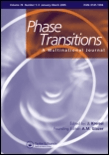
PHASE TRANSITIONS
Scope & Guideline
Illuminating Innovations in Material Properties
Introduction
Aims and Scopes
- Phase Transitions in Materials:
The journal emphasizes the exploration of phase transitions in different materials, including ceramics, metals, and polymers, detailing the mechanisms and thermodynamics involved. - Multiferroics and Magnetoelectric Materials:
A significant area of focus is the study of multiferroic materials and their phase transitions, which have implications for magnetoelectric applications and devices. - Computational and Theoretical Studies:
The journal promotes research utilizing computational methods and theoretical frameworks to predict and analyze phase behavior and transitions, enhancing the understanding of complex systems. - Dielectric, Magnetic, and Thermal Properties:
Investigations into the dielectric, magnetic, and thermal properties of materials during phase transitions are a core element, providing insights into their functional characteristics. - Nanostructured and Composite Materials:
The journal includes studies on nanostructured and composite materials, exploring how phase transitions are influenced by size effects and interfaces. - Experimental Techniques and Characterization:
Research that employs advanced experimental techniques for the characterization of phase transitions, such as spectroscopy and microscopy, is prominently featured.
Trending and Emerging
- Nanomaterials and Size Effects:
There is an increasing focus on how nanoscale dimensions influence phase transitions, with research delving into size-induced effects and their implications for material properties. - Interfacial Phenomena:
Studies examining interfacial phenomena during phase transitions are on the rise, particularly in composite materials, as these aspects play a critical role in determining overall material behavior. - Machine Learning and AI in Phase Transition Studies:
The integration of machine learning and artificial intelligence methods to predict and analyze phase transitions is emerging as a prominent trend, enhancing the efficiency and accuracy of research. - Hybrid Materials and Multi-Functional Applications:
Research on hybrid materials that exhibit multiple functionalities through phase transitions is gaining traction, focusing on their potential applications in electronics and energy storage. - High-Pressure Phase Transitions:
There is a growing interest in studying phase transitions under high-pressure conditions, which can lead to novel material properties and behaviors not observable at ambient conditions.
Declining or Waning
- Traditional Solid-State Phase Transitions:
There has been a noticeable decline in papers focusing solely on classical solid-state phase transitions, possibly due to the growing interest in more complex and novel materials. - Liquid Crystal Studies:
Though liquid crystals remain a relevant topic, the frequency of publications specifically addressing traditional liquid crystal phase transitions has decreased, indicating a shift towards more innovative applications. - Thermal Properties Alone:
Research centered solely on thermal properties of materials without a direct connection to phase transitions has become less common, as studies increasingly integrate multiple property analyses. - Basic Thermodynamic Models:
The use of basic thermodynamic models to explain phase behavior has diminished, with a trend towards more sophisticated modeling techniques and simulations.
Similar Journals

JOURNAL OF THERMAL ANALYSIS AND CALORIMETRY
Fostering collaboration in the realm of thermal studies.JOURNAL OF THERMAL ANALYSIS AND CALORIMETRY is a premier academic publication dedicated to advancing the fields of condensed matter physics and physical chemistry. Published by SPRINGER, this journal features cutting-edge research articles, reviews, and critical insights into thermal analysis and calorimetry, showcasing methodologies and discoveries that push the boundaries of material science and chemical analysis. With an impressive impact factor and ranking in the Q2 quartile across its relevant disciplines in 2023, it stands as a reputable platform for scholars and industry professionals. The journal is accessible through traditional subscription models and is committed to maintaining high scientific standards while encouraging interdisciplinary collaboration. Located in the Netherlands since its inception in 1995, the JOURNAL OF THERMAL ANALYSIS AND CALORIMETRY not only facilitates international discourse but also provides essential tools and knowledge for those engaged in thermal studies. For researchers, this journal represents an invaluable resource that fosters innovation and exploration in the fascinating interplay of thermal properties and chemical phenomena.
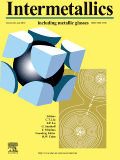
INTERMETALLICS
Pioneering Research in Intermetallic CompoundsINTERMETALLICS, a prestigious journal published by ELSEVIER SCI LTD in the United Kingdom, has been a vital resource in the fields of Materials Science, Mechanical Engineering, and Chemistry since its inception in 1993. Renowned for its rigorous peer-review process and commitment to high-quality research, this journal enjoys an impressive position within the top quartile (Q1) rankings of its categories, signifying its influence and esteem in the academic community. With a particular emphasis on the study of intermetallic compounds and their applications, INTERMETALLICS attracts groundbreaking research and innovative contributions that push the boundaries of knowledge in metals and alloys, as well as mechanics of materials. Researchers looking for a platform to disseminate cutting-edge findings will find this journal an exemplary choice, further enhanced by its commendable Scopus rankings that illustrate its widespread recognition and relevance. Though it does not currently offer Open Access options, the journal remains committed to advancing the field through selective publication of impactful research, making it an essential reference for researchers, professionals, and students alike interested in the dynamic interplay between materials and engineering.

Journal of Superhard Materials
Empowering researchers through cutting-edge findings in superhard materials.The Journal of Superhard Materials, published by PLEIADES PUBLISHING INC, is a premier journal dedicated to advancing the field of superhard materials, including their synthesis, properties, and applications. With an ISSN of 1063-4576 and E-ISSN 1934-9408, this journal serves as an essential resource for researchers and professionals focused on material science and inorganic chemistry. As of 2023, it ranks in the Q3 category for both Inorganic Chemistry and Materials Science (miscellaneous), establishing its growing significance within the scientific community. The journal, located in the United States at PLEIADES HOUSE, New York, welcomes submissions that contribute innovative findings in the realm of superhard materials, fostering collaboration and knowledge exchange among scholars. Researchers interested in cutting-edge developments and applications in this niche area will find valuable insights and findings published in this journal, encouraging continued exploration and discovery in the materials sciences.

Letters on Materials
Exploring the forefront of materials research and engineering.Letters on Materials, published by the Russian Academy of Sciences, Institute of Metals Superplasticity Problems, serves as a vital platform in the diverse field of materials science. Established in 2014 and running through 2024, this journal has carved a niche as a Q3 category publication, focusing on innovative research and developments in materials science and engineering. With its ISSN 2218-5046 and E-ISSN 2410-3535, it provides a unique opportunity for researchers and industry professionals to disseminate significant findings and theoretical advancements within the materials domain. While currently not categorized as open access, the journal maintains a global reach, promoting scientific dialogue and collaboration particularly within the Russian Federation and broader international audiences. Its placement within the 25th percentile in the Scopus rankings underscores its emerging significance, making it essential reading for anyone interested in cutting-edge materials research.
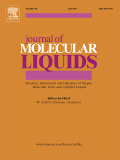
JOURNAL OF MOLECULAR LIQUIDS
Innovating the Future of Molecular Liquid StudiesJOURNAL OF MOLECULAR LIQUIDS, published by Elsevier, is a premier academic journal focused on the intricate nature of molecular liquids, spanning foundational to applied research. With an ISSN of 0167-7322 and an E-ISSN of 1873-3166, this journal has established its significance in various fields, achieving Q1 rankings across atomic and molecular physics, condensed matter physics, and materials chemistry, among others, as of 2023. The journal’s broad scope, covering studies from theoretical frameworks to experimental applications, serves as a vital platform for disseminating innovative research findings while advancing our understanding of molecular interactions and dynamics. With a strong position in Scopus rankings and high impact factors, it is a trusted resource for researchers, professionals, and students alike, seeking comprehensive insights into molecular liquids. As a journal that thrives on pioneering energy, the JOURNAL OF MOLECULAR LIQUIDS is essential for anyone wishing to remain at the forefront of research in this dynamic field.

Condensed Matter
Transforming Research into Knowledge for AllCondensed Matter is a leading open-access journal dedicated to the diverse and dynamic field of condensed matter physics, published by MDPI since 2016. With its base in Switzerland, the journal aims to present a platform for researchers and professionals to share innovative findings and advancements in areas such as electronic, optical, and magnetic materials. As of 2023, it is ranked in the Q3 category for both condensed matter physics and electronic, optical, and magnetic materials, a testament to its relevance and growth within the scientific community. Researchers will find valuable insights through its accessible format, fostering collaboration and knowledge dissemination within this interdisciplinary field. With a commitment to enhancing the global dialogue in condensed matter studies, Condensed Matter invites contributions that explore theoretical and experimental approaches, thus pushing the boundaries of understanding in this crucial area of science.
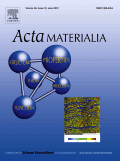
ACTA MATERIALIA
Elevating Knowledge in Materials ScienceACTA MATERIALIA is a premier journal in the field of materials science, published by PERGAMON-ELSEVIER SCIENCE LTD. With an ISSN of 1359-6454 and an E-ISSN of 1873-2453, this esteemed journal serves as a vital platform for disseminating high-quality research across various critical domains, including ceramics and composites, electronic, optical and magnetic materials, metals and alloys, and polymers and plastics. Recognized for its impact in the field, ACTA MATERIALIA boasts a remarkable standing, featuring a Q1 ranking in multiple categories as of 2023, solidifying its importance among the top journals in materials science. Researchers and professionals benefit from open access options, ensuring that groundbreaking findings are available to a global audience. Operating out of the United Kingdom, ACTA MATERIALIA strives to advance knowledge and innovation within the materials science community, making it an invaluable resource for academics, industrial professionals, and students dedicated to the future of material engineering and technology.
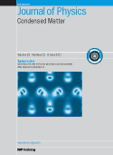
JOURNAL OF PHYSICS-CONDENSED MATTER
Advancing the Frontiers of Condensed Matter Physics.JOURNAL OF PHYSICS-CONDENSED MATTER, published by IOP Publishing Ltd, stands as a premier platform for the dissemination of impactful research in the fields of condensed matter physics and materials science. Since its inception in 1989, this journal has successfully bridged the gap between fundamental and applied research, delivering cutting-edge findings pertinent to both the academic community and industry professionals. Ranking in the Q2 category for both Condensed Matter Physics and Materials Science, it holds a respectable position within the scientific community, as evidenced by its Scopus rankings. With a commitment to fostering innovative research and promoting open dialogue, the journal offers a substantial collection of articles that contribute to the evolving landscape of materials science and physics. Researchers and students are encouraged to engage with the journal’s rich content, which not only enhances their academic pursuits but also plays a crucial role in advancing technologies based on solid-state materials.

COMPUTATIONAL MATERIALS SCIENCE
Exploring the Fusion of Computation and MaterialsCOMPUTATIONAL MATERIALS SCIENCE is a prestigious academic journal dedicated to the dissemination of innovative research in the field of computational materials science, emphasizing the interplay between computational methodologies and materials engineering. Published by ELSEVIER in the Netherlands, this journal showcases high-impact articles that contribute significantly to the understanding of material properties through computational techniques. As evidenced by its 2023 Scopus Rankings, which place it in the top quartiles across multiple disciplines including Computer Science, Materials Science, and Physics and Astronomy, it is a vital resource for researchers, professionals, and students alike. With a focus on advancing scientific knowledge and practical applications, COMPUTATIONAL MATERIALS SCIENCE aims to bridge the gap between theoretical investigations and experimental validation. Explore a wealth of cutting-edge research designed to inspire the next generation of innovations in materials science through this esteemed publication.

PHILOSOPHICAL MAGAZINE
Illuminating Complexities in Physical SciencesPHILOSOPHICAL MAGAZINE, published by Taylor & Francis Ltd, is a distinguished journal that focuses on the field of Condensed Matter Physics. With an ISSN of 1478-6435 and an E-ISSN of 1478-6443, this journal serves as a vital platform for researchers and professionals seeking to disseminate and access cutting-edge research and developments in the field. Currently ranked in the Q3 category within its discipline according to the 2023 quartiles, and positioned at the 45th percentile in Scopus rankings, PHILOSOPHICAL MAGAZINE is recognized for its significant contributions to theoretical and experimental physics. The journal embraces open access options, enhancing its reach and accessibility to a global audience. With coverage spanning from 2003 through 2024, it remains a cornerstone for scholars and students who aim to deepen their understanding of the complexities within condensed matter systems. For anyone engaged in the physical sciences, PHILOSOPHICAL MAGAZINE offers invaluable insights and fosters an environment of rigorous academic inquiry.